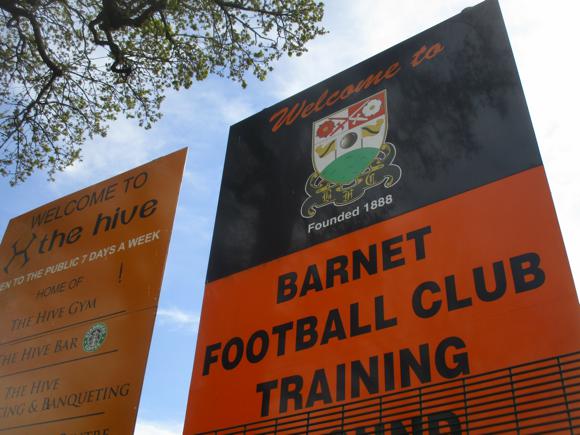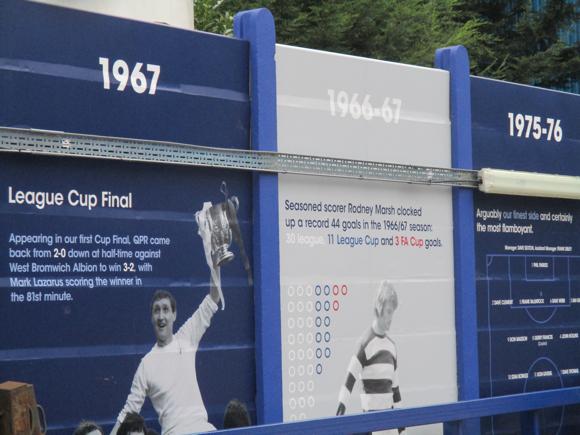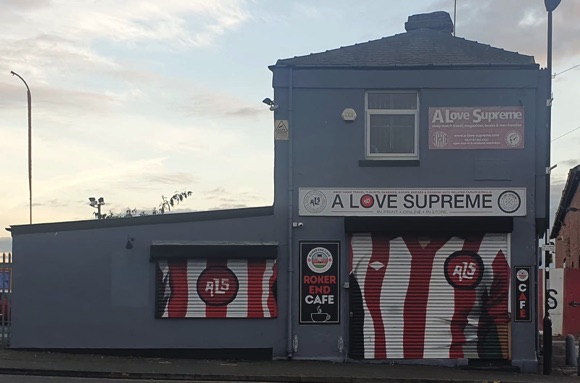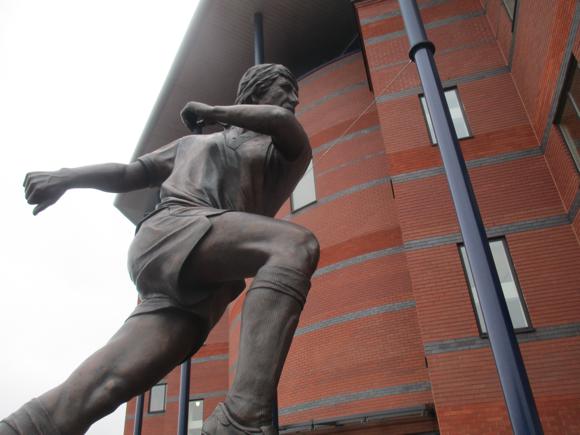A fan’s guide – the club from early doors to today
After ten years in the Premier League, Stoke City dropped down to the Championship in 2018. Given that it took the club nearly 25 years to clamber back up to the top flight in 2008, it may be some time before the Potters return.
Then again, Stoke had to wait 90 years for their only major silverware, a solitary League Cup win in 1972. Tony Waddington’s team would be many fans’ choice as Stoke’s best. But that would be to ignore nearly three decades that one of football’s greatest ever players, Sir Stanley Matthews, played for his home-town club.



Stoke Ramblers were formed in 1863, playing their first match in 1868. Ground-sharing with Stoke Victoria Cricket Club, the Ramblers merged with their hosts to become Stoke Football Club. The ground the new club moved to was named after the hotel that stood nearby: Victoria. Turning professional in 1885, Stoked joined the inaugural Football League three years later.
The league’s weakest team, Stoke were soon relegated and only picked up after Matthews arrived in 1932. Having bought the Victoria Ground, and changed their name to Stoke City, The Potters returned to the top flight once Matthews started beating defenders, at pace, time after time. Crowds flocked to see him, and Stoke could buy quality teammates for the incomparable Matthews – prolific goalscorer Freddie Steele had joined as a teenager.
Just when Stoke looked set for the title, in 1946-47, Matthews left for Blackpool, and the club slumped until he returned 14 years later.




It was Waddington who persuaded Matthews to come back, at 46, the veteran joined by Dennis Viollet and Roy Vernon to make Stoke a credible force once more. Though they lost the League Cup Final of 1964 to Leicester, opposing goalkeeper Gordon Banks became a Stoke player in 1967.
With record club scorer John Ritchie and evergreen George Eastham, Stoke enjoyed their best ever spell in the First Division, enduring a number of epic cup semi-finals. After four games against West Ham, a seven-hour muddy marathon that saw Gordon Banks save a penalty at one end and Bobby Moore (!) at another, Stoke overcame Chelsea 2-1 to win the League Cup of 1972.
With Waddington’s departure in 1977, a string of managers failed to reverse another slump. Twenty years later, Stoke moved to the new Britannia Stadium – and by 1998 were relegated to the third flight.


Backed by an Icelandic consortium, Stoke gained promotion under manager Gudjon Thordarson, rewarded with the sack. Tony Pulis, having gained Stoke last-gasp salvation from the drop, endured a similar fate.
The turning point came in 2006, with the return of Pulis and departure of the Icelandic owners for the locally born Coates family, pioneers of online betting. Playing a long balls, some thrown in by Rory Delap, and near unbeatable at home, Stoke made the Premier League, then earned hard-fought mid-table finishes.
Losing 1-0 to Manchester City in the FA Cup final of 2011, Stoke embarked on their first European campaign since 1974, bringing in England strikers Peter Crouch and Michael Owen. Overcoming Dynamo Kyiv and Besiktas, Stoke narrowly fell to Valencia in the Europa League.



Domestic form disappointed, leading to the departure of Pulis at campaign end. His replacement, Mark Hughes, got the best out of Charlie Adam and Peter Crouch for an impressive ninth-place finish to 2013-14, the highest since 1975. He repeated the feat in 2015 and 2016.
Despite the long-range goals of Swiss international Xherdan Shaqiri, Stoke slipped down the table as Hughes failed to keep the points coming in. With heavy defeats at Manchester City, Spurs and Chelsea in 2017-18, relegation looked likely, though even after Hughes was replaced by Paul Lambert, Stoke went nearly four months without a league win.
With Shaqiri signed by Liverpool and Lambert making way for Gary Rowett, Stoke fared little better in the Championship, battling gamely at the wrong end of the table.








Ground Guide
The field of dreams – and the stands around it






Opened on the southern outskirts of town in 1997, the bet365 Stadium is the classic suburban new-build. Now holding 30,000, it was unveiled as the Britannia Stadium by Stoke legend Sir Stanley Matthews, whose triptych statue outside the ground catches the master in full flow.
It was at the Victoria Ground, on Boothen Road just the along the Trent from Stoke station, that Matthews thrilled crowds for three decades. The club had moved there in 1878 but only made significant improvements when the Matthews factor brought in 40,000-plus attendances. The record crowd of 51,000 came in 1937.
Sadly the stadium also triggered the demise of the great Stoke side under Tony Waddington. High winds in 1976 blew the roof off, and a series of expensive repairs emptied the club coffers, forcing the sale of key players. By the time it came to obligatory all-seater stadia, the venerable Victoria Ground was proved unsuitable.







It cost nearly £15 million to build an out-of-town stadium, sponsored by a bank. Britannia, but later coming under the full ownership of the club.
Though stuck out by a business park near two major roads, the bet365 doesn’t lack for atmosphere, Delilah sung in full voice as the teams come out.
Home and away fans share the South Stand, currently the Caldwell Construction Stand. Press and VIPs are accommodated in the main Franklyn Stand. In deference to the Victoria Ground, the north goal is the Boothen End, with the Tile Mountain Stand running along the other sideline. The club shop and ticket office are in the south-west corner of the stadium, close to the away entrance.
getting there
Going to the ground – tips and timings

On match days, regular shuttle buses (£4 return, £2 discounted) run from Glebe Street near the station. If you’re exiting the station with the North Stafford hotel ahead of you, turn right then right again, before passing under a bridge. Turn left at the end, then into Glebe Street, by the church. After the match, buses return from behind the DPD (East) Stand, nearest the Harvester and Holiday Inn hotel.
D&G bus 24/24A runs hourly from Stoke station past the stadium, journey time 10min – Saturday services stop at 2.30pm, Sunday’s at 1.30pm.
From the rank to the left as you exit the station, a taxi will cost you £7.50-£8. Walking is inadvisable, even dangerous after dark, due inaccessible main roads en route.

The sat nav code for the bet365 Stadium is ST4 4EG. Booking a space in the South Car Park at the ground is done on a match-by-match basis by calling 01782 367 599 – there’s no online booking.
There are a few hundred parking spaces available nearby at the Lucozade Powerleague sport complex (ST4 4TN) on Dennis Viollet Avenue, the Longton Rugby Club (ST4 8WG) on Eastern Rise (off Sir Stanley Matthews Way), both with pre-match bars, and at Screwfix (ST4 8HS) on Sir Stanley Matthews Way, each costing £5. A handful of businesses on Gordon Banks Drive (ST4 4TW) also provides match-day parking for £6.
getting in
Buying tickets – when, where, how and how much


Tickets go on general sale about one month in advance. The ticket office (Mon-Fri 9am-5pm, non-match Sat 9am-5pm, match days from 9am) is beside the club shop, in the south-west corner of the stadium. Tickets can also be bought over the phone (01782 367 599) or online after registering.
Prices in the Main Stand range from £29-£35, discounted at £22-£27 for over-65s, £18-£19 for under-17s and £12-£16 for under-11s. In the opposite stand, it’s £27-£30 (£20-£23/£15-£16 and £12-£13) while at each end, including for away fans in the South Stand, it’s £25 (£19/£15/£12).
what to buy
Shirts, kits, merchandise and gifts


The Club Store (Mon-Fri 9am-5pm, Sat 9am-5pm, match days 9am-kick-off, then open for 1hr after final whistle) occupies the south-west corner of the stadium. There’s another outlet at the Potteries Shopping Centre (Mon-Wed, Fri-Sat 9am-6pm, Thur 9am-8pm, Sun 10.30am-4.30pm) in Hanley.
If Stoke cannot play in their storied red-and-white stripes, then light green is the current away strip. Other gear includes ’72 vintage retro tops, Tony Leonard’s biography of Tony Waddington, Director of a Working Man’s Ballet, and old-school bobble hats for when the wind whips through the open corners of the stadium in winter.
Where to Drink
Pre-match beers for fans and casual visitors





Near the stadium you’ll find chain-restaurant Harvester Trentham Lakes and the lobby bar of the adjacent Holiday Inn hotel. The Harvester has a pub-like main room, offering affordable Marston’s beer – it’s Boddingtons at the hotel.
No more promising but surprisingly accommodating, the Lucozade Powerleague football centre, signposted the other side of a nearby mini-roundabout, contains a perfectly acceptable bar overlooking one of a cluster of five-a-side pitches. Offering TV sports, and draught Tetley’s and San Miguel, the somewhat bare bar gets busy on match days – décor has been reserved for the hallway, where portraits of football greats greet the endless trotting in and out of five-a-side teams.





A little further out, about 10mins along Sir Stanley Matthews Way and left up Eastern Rise, the Longton Rugby Club has a convivial bar upstairs, usually amicably shared by home and away fans. Another option is in the opposite direction, along the canal path, past the roundabout and up Campbell Road, where the Gardeners Retreat on Sideway Road offers TV sport and a play area for kids.
At the ground, Delilah’s Bar (£2 entry) opens for home fans 3hrs before the game, then for 1hr afterwards.






































































































